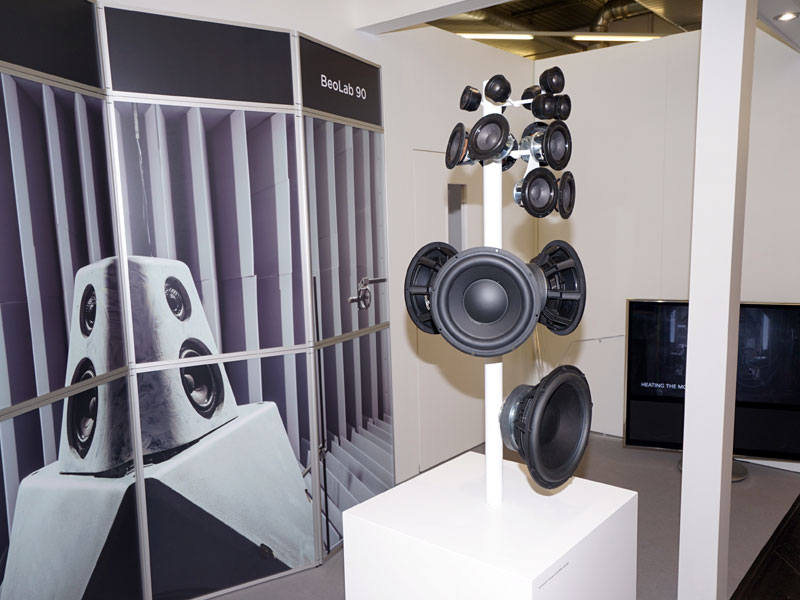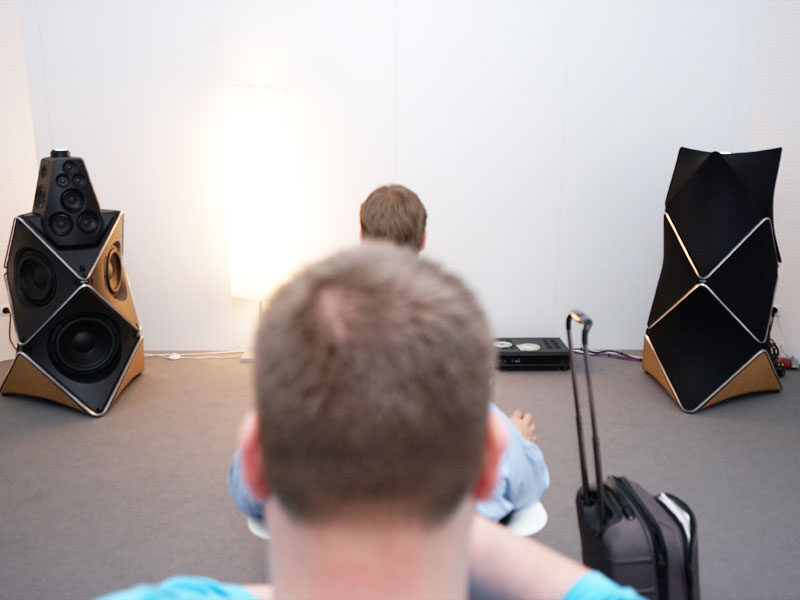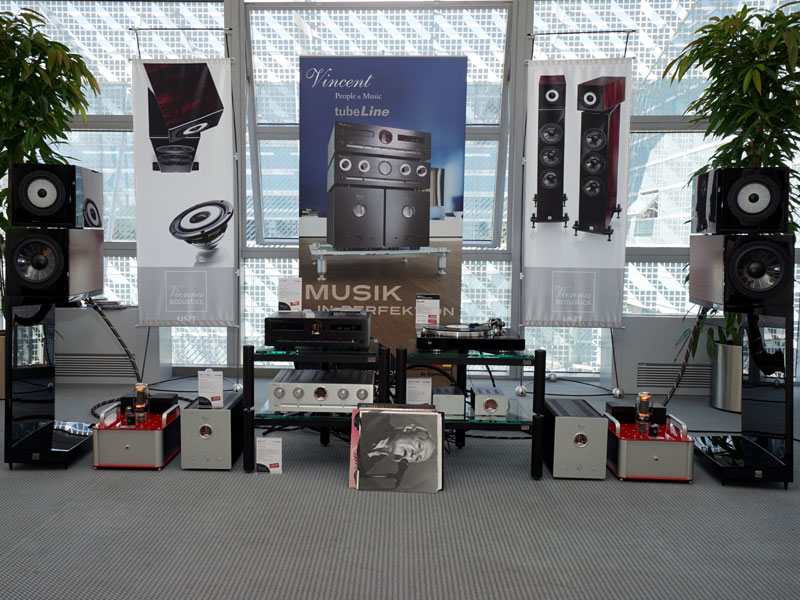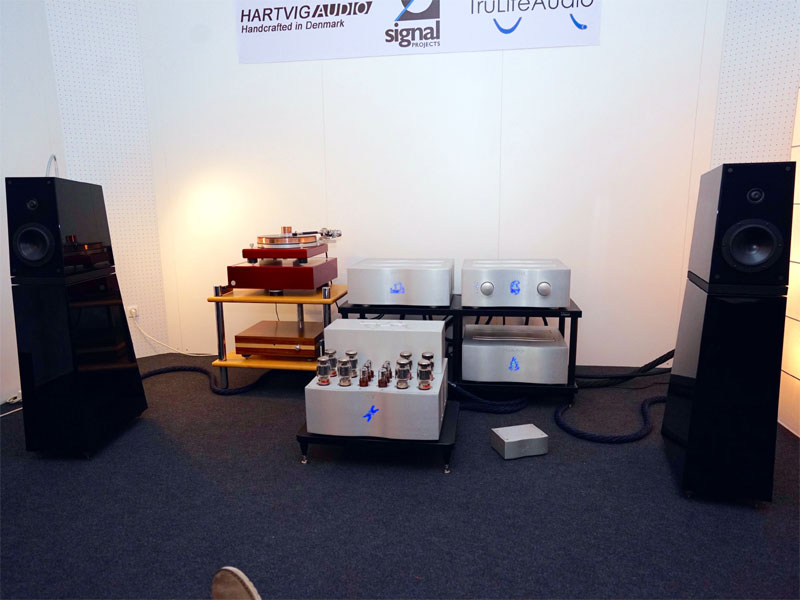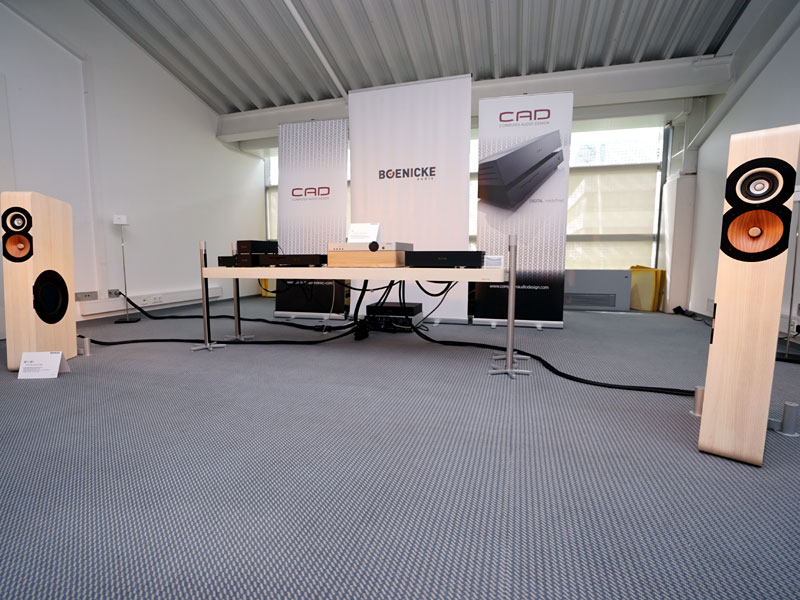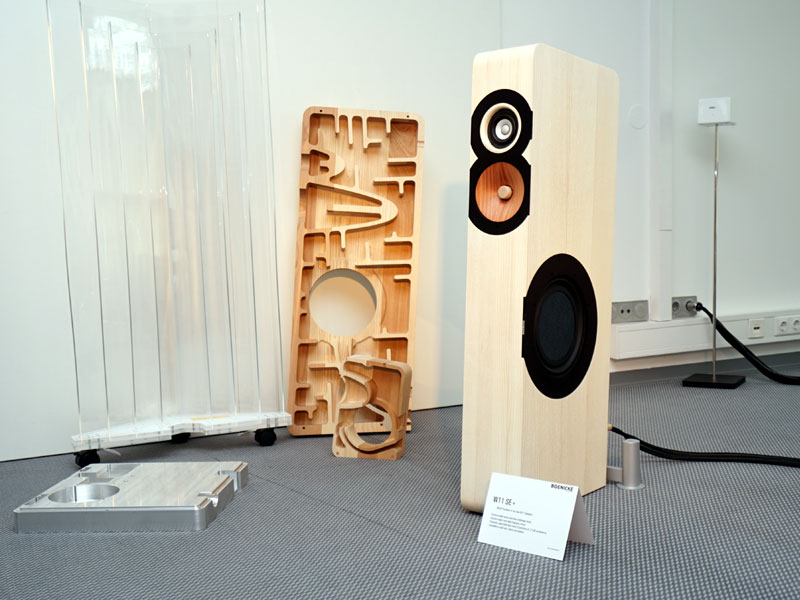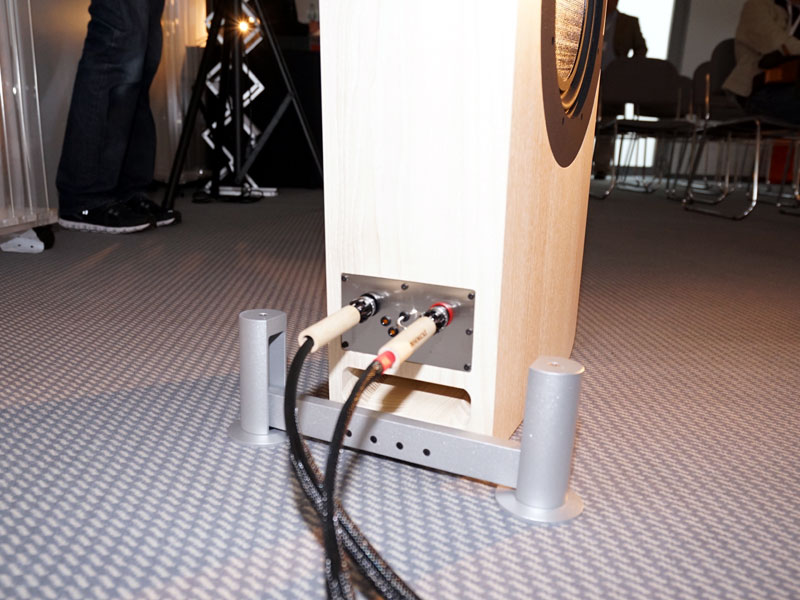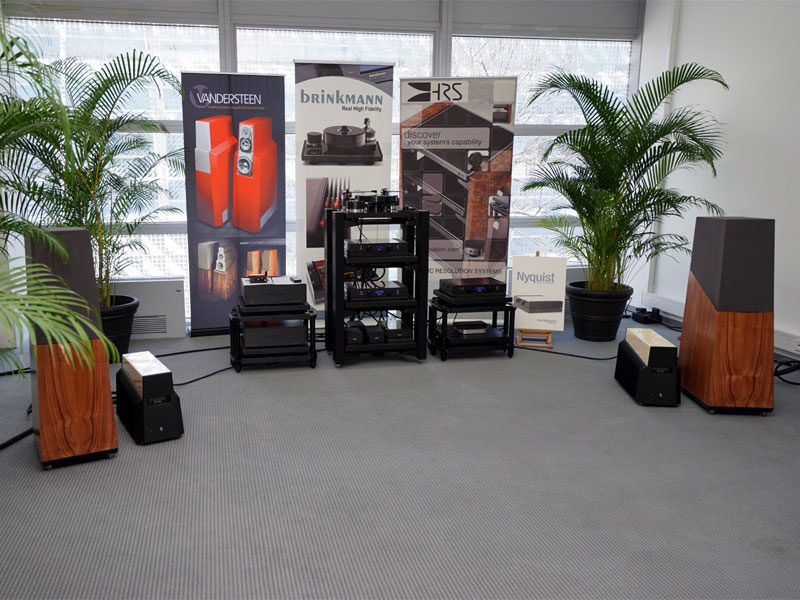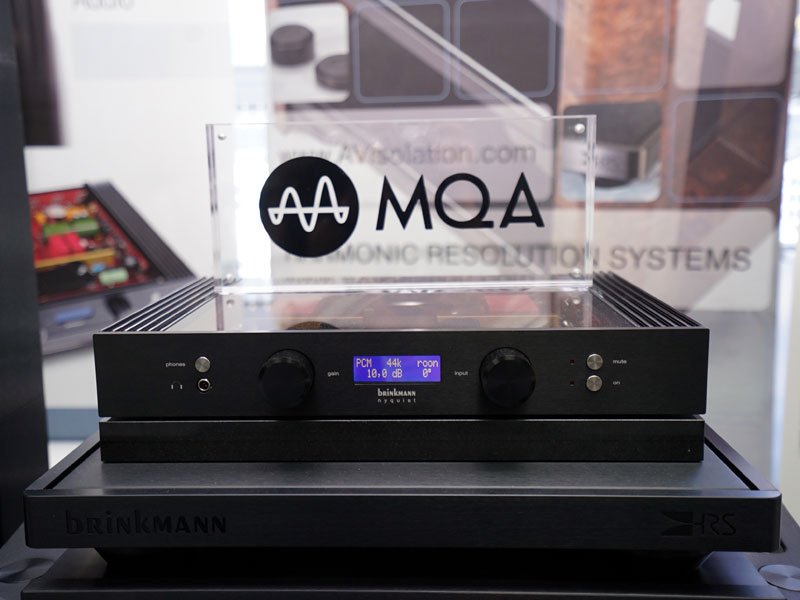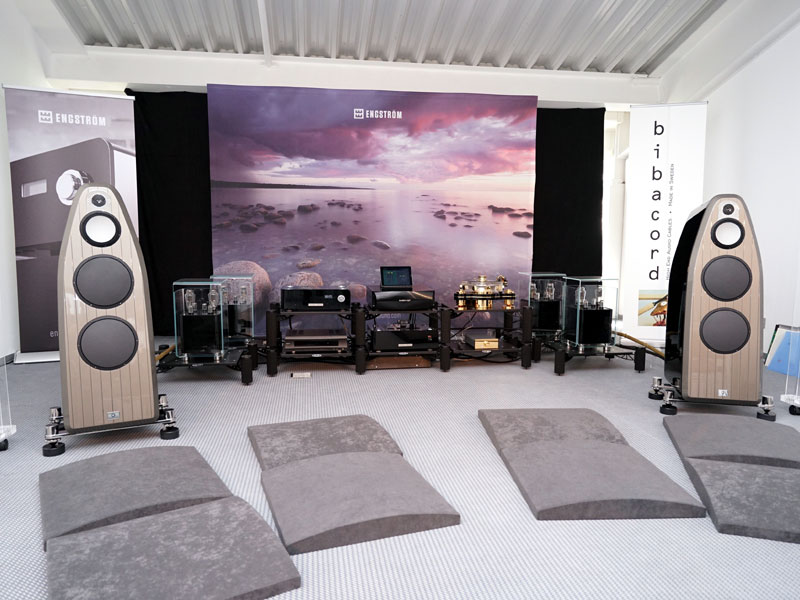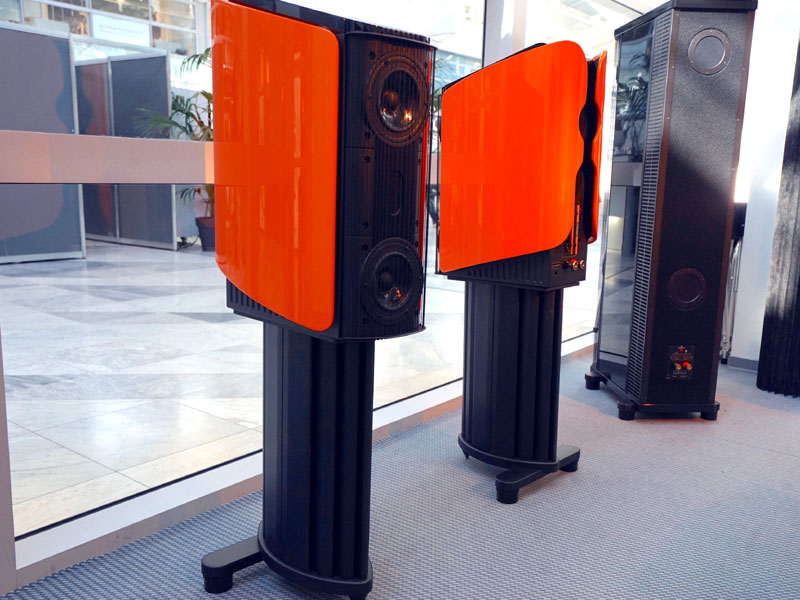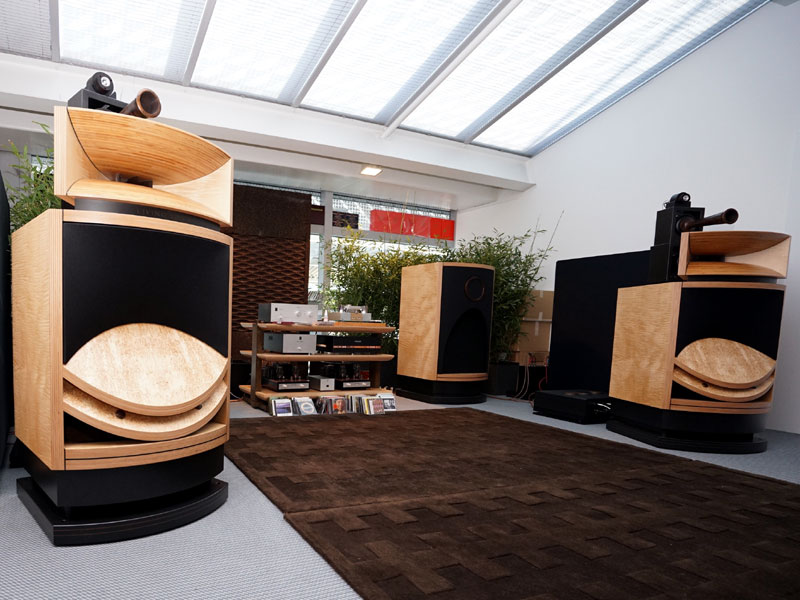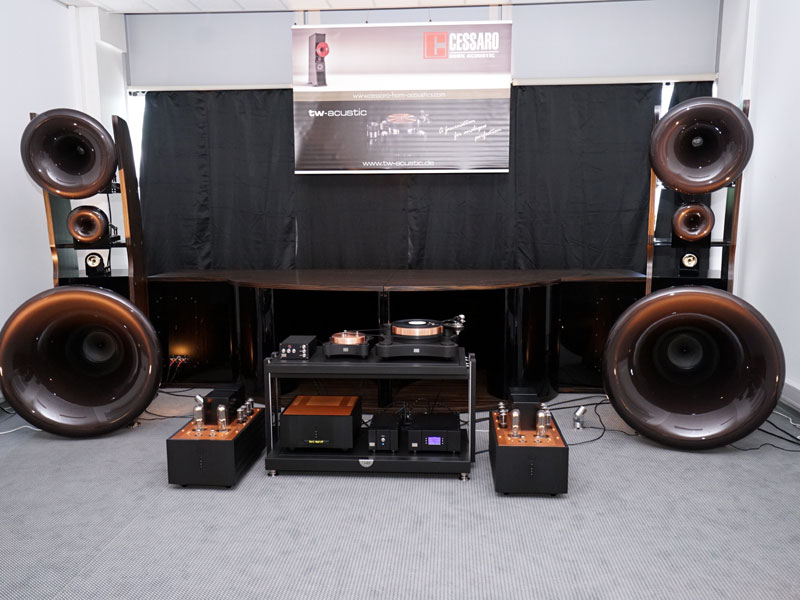High End 2016 • Next Year in Marienbad?
hey say that when it comes to buying property, the three most important considerations are location, location and location. It’s a maxim that is even more appropriate for audio shows, and potential exhibitors need to consider it carefully, although in a subtly different sense. First, they need to look at the geographical location of the event, then the nature of the venue chosen for the event, and finally their own position within that venue. Any one of those considerations can prove fatal to attendance. So the news that the MOC, venue for the High End show, may be closing sent, if not shock waves then rumors swirling through the event. I heard that this would be the last year at the MOC, I heard that the show had a contract for the next four years, and I heard every conceivable variation in between. What that tells you is that most people know there’s an issue, but that’s the sum total of their knowledge and the rest is the product of overactive imaginations and underemployed individuals.
So let’s at least clarify what facts seem to be out there. The land on which the MOC stands is owned by BMW, whose headquarters is close by. It seems that they are considering redeveloping the site and repurposing it for some aspect of car production. Now, this is a large site and the investment necessary to redevelop it would be considerable -- certainly a main-board decision, even in a company the size of BMW. Given the recent revelations about emissions testing and the fuel-economy figures provided by the motor manufacturers, it’s probably fair to say that the board of any major car company has quite a lot on its plate right now. Add to that the fact that the job security of their chief executives is currently measured on a scale previously reserved for English Premier League soccer coaches (and only those whose teams have reached Christmas without a win to their names) and you can see how any decision on the part of BMW might well be delayed or even subsequently reversed, leaving any events planned for the MOC in limbo. In addition to the issues around continuity and the MOC, there’s the backdrop of the general economic malaise currently afflicting Europe, aggravated by the questions over whether Britain will remain in the European Union or leave, as well as the social panic over the "migrant crisis." Throw in the absence of any obvious passing audio bandwagons (the hysteria around file replay sagging like a popped balloon under the realization that it’s not quite as simple as its proponents claimed) and suddenly you can see how an industry that’s predominantly conservative in nature could worry itself into its own crisis of confidence. Under the circumstances, the fact that the MOC's tenuous future never got past the point of rumor is testimony to the phlegmatic performance and confident exterior of show organizer Branko Glisovic and his team. Moving a show is always a potential problem, and it’s hard to give it a positive spin, but if anybody can, it’s Branko. Just look at the show's move from Frankfurt to Munich as an object lesson in how to turn a possible pitfall into a brilliant success. The key factors might well be location, location, location, but just remember that somebody has to choose that location in the first place, and history suggests that the High End show is in safe hands. Take all those factors together and perhaps it’s no surprise that unlike previous years in which, for each show, an obvious trend or theme has emerged, the overriding impression was one of uncertainty and an aimless lack of concerted direction. Stunning new products were thin on the ground, and if there was a common thread then it was downsizing, whether in the shape of simplified products or smaller systems, itself a sign of companies consolidating rather than speculating.
All of which makes not just the presence of Bang & Olufsen at the show but the fact that they were presenting a €70,000/pair speaker, the BeoLab 90, particularly pertinent. After all, B & O have been serving the luxury sector for longer and with greater success than any other audio company. The BeoLab 90 is bold (some would say bizarre) in appearance, as befits the most recognizable high-end audio brand on the planet. Before you get all hot under the collar about my describing B & O as "high-end," consider this: put a thousand of the wealthiest people on the planet in a room and ask each of them to name his or her idea of the "best" audio equipment out there, and how many of them are going to come back with B & O? I rest my case. The luxury market isn’t just about performance; it’s about perception (which is why Devialet are trying so hard -- and failing -- to supplant B & O in the 21st-century public consciousness). In fact, you could argue that performance actually comes a very poor second to brand identity. What’s important is that it looks the part and ticks all the right boxes.
In that regard, once again B & O are triumphant. Forget the Phantom, the BeoLab 90 can boast 18 drivers a side (although perhaps that should really be on all sides), each one actively driven and DSP controlled. The result is an app-controlled, two-speaker system that offers room compensation, variable dispersion and steerable output to suit anything up to five different listening positions. To purists the result probably resembles the bastard child of a Bose 901 and Meridian DSP8000, but only a fool would suggest that B & O don’t know their market -- and the fact that they clearly have faith in a €70,000 sound solution should be encouraging for the high end as a whole.
Just who was making small systems work for them? Once again, Vienna Acoustics achieved highly listenable results from an apparently modest setup, teaming their striking €12,000/pair The Kiss loudspeakers with an all-Vincent set of electronics (CD-S7, SA-T7 line stage and SP-T700 monoblocks, €1999 each). The analog source was a Dual CS600 record player (€1299, or €1499 in piano black) feeding a Vincent PHO-700 phono stage (€600) with basic Vincent cabling throughout. Also on show were a pair of Blöhbaum System prototype monoblocks (estimated price €25,000.pair), product of the same designer responsible for the Vincent gear. The sound was lively, engaging and fun -- as was the music played -- a real breath of fresh air at a show where "audiophile standards" seemed to have risen from the dead (I was even subjected to Dafos!) and exactly what a decent hi-fi system should deliver. The Vienna room was an object lesson in paying attention to the basics in order to deliver value-for-money performance, underlining once again that not only is a system, by definition, a combination that’s greater than the sum of its parts, but that those parts resolutely resist simplistic categorization of the "front-end first" variety. That little Dual deck was doing a great job, a timely reminder of just how effective budget turntables can be.
Smaller but pricier, the Hartvig and TruLife Audio system was making beautiful music in one of the prefabricated cabins. The junior Hartvig turntable (€9700) was loaded up with the optional copper platter (€5000) and battery power supply (€4000) and sat on the Master Reference Platform (€5000). The tonearm was a Tri-Planar Ultimate ($10,000) carrying a Shelter Harmony cartridge (€3000) with all electronics supplied by the Greek tube maestros of TruLife Audio, in this case their massive Argo MM/MC phono stage (€15,700), Athena line stage (€12,200) and Zeus KT88-based, 150Wpc stereo amplifier (€19,000). All electronics are dual mono with tube rectifiers and balanced as well as single-ended inputs and were run from TruLife's Prometheus AC line filter (€8500) while driving the understated (and underrated) Verity Audio Leonore loudspeakers ($16,000/pair) via Signal Projects cabling (from €5000). That’s a smallish turntable and a lot of big boxes in a small space, but the sound was notably lucid, sweet and engaging, with the hallmark fluidity that characterizes the Hartvig ‘tables. But what was particularly impressive was the sense of rhythmic and dynamic authority, This was music with a sense of substance and presence that belied the prefabricated surroundings and small speakers, a system I could have listened to and enjoyed for far longer than the time available.
Also to be found in the prefabricated spaces of the ground-floor halls was the Neodio booth, where the Origine S2 CD player was paired with the new Origine A2 amplifier (€35,000 each), both sharing the same beautifully striking styling and exemplary fit and finish. This minimalist setup was completed with a pair of tall Pascal Louvet loudspeakers (€5500/pair in stock form), an unusual three-way D’Appolito design in which all drivers are reflex loaded, upgraded with Neodio internal wiring and an octet of the Origine B2 feet, raising their price to €9000. Neodio cables were used throughout, all priced at less than €1000 a pair to create a neat, four-box solution with refreshingly low domestic impact. But don’t be fooled by appearances: this was one of the most musically coherent and engaging systems at the show, with the natural sense of flow and phrasing that makes the Origine CD player so engaging and impressive -- qualities that seem to extend to the new amplifier as well. The Decca Brahms Scottish Fantasy was delivered with real verve and virtuosity, with bite and texture to the bowing but no edge or glare, testimony to the superb harmonic and dynamic resolution. Orchestral string tone was excellent, contained in a beautifully present acoustic space. Ben Webster was both lively and subtle, with fluid, unforced lines and particularly impressive piano sound, while the bass was articulate and perfectly pitched. The Xavier Phillips/Francois-Frédéric Guy Beethoven cello sonatas were full of conversational and creative tension, the cut and thrust of the two instruments vivid and immediate, while Batiashvilli’s Shostakovich Violin Concerto was achingly beautiful, the slightly distant perspective adding to the sense of isolation. This was no rose-tinted view of events that softened and sweeten the music; instead, each recording was being actively encouraged to speak for itself. Neodio’s Origine CD player has been somewhat overlooked in the general hysteria surrounding file replay, yet it constitutes one of the most musically satisfying, practical and affordable digital front-ends currently available. It looks like the A2 amplifier seems set to match that impressively listenable performance.
Next up are two systems that achieved that rare feat of delivering convincing musical performance from a file-replay source. If anybody can master that art, then perhaps it’s no surprise to discover that Computer Audio Design (CAD) has done so. The CAD server (£6300 including 1TB SSD) and 1543/II DAC (£7250) were used to feed the eclectic speakers and amp from Boenicke Audio and Analogue Audio Engineering, respectively. The E2 amplifier (€15,000) is an integrated class-AB design delivering 200Wpc into 8 ohms and 400 into 4, with options to add internal DAC and phono sections. It uses transformers for voltage gain, producing a very low-distortion signal from its milled-out wooden housing.
Even more unusual are the Boenicke W11 loudspeakers (€25,000/pair). Each half of the heavily pocketed clamshell cabinet is milled out of a six-plank slab before being glued together. It is then populated with custom midrange and treble units, and, yes, that is a wooden cone on the midrange driver. The bass unit comes from Dayton Audio, and an auto-transformer allows you to trim the treble output in five discrete steps.
The whole cabinet hangs from a spring suspension concealed in the rear legs and beneath the speaker body, a similar suspension being incorporated into the wide table supporting the electronics. Naturally, the whole system benefited from the clean ground supplied by CAD’s Ground Control units. If I had to sum up the sound in this room in a single word it would be calm. Sweet, open, relaxed and lucid, it clearly benefited from the low-noise, low-distortion setup and filterless DAC, complementary thinking that reaped a spectacular musical dividend. I liked the sound (and the approach) in this room a lot.
Ironically, the other computer audio front-end that really impressed was based on Brinkmann’s Nyquist DAC ($13,000); perhaps it takes an analog specialist to recognize decent digital performance. Much of this system was familiar, with the Spyder turntable ($12,000) equipped with a pair of 12.1 tonearms ($7500 each) and EMT-ti cartridges ($4300) and the tube RöNt power supply ($4300), feeding the company’s Edison phono stage and Marconi preamplifier ($12,990 each). Power amps were the Vandersteen M7-HPA liquid-cooled monoblocks ($52,000/pair), while signal cables were from the AudioQuest WEL Signature series, with Shunyata Research power cords and conditioning. Where things started to depart from last year’s script was in the rack: the new, mightily impressive and utterly immobile HRS VXR, with a full complement of M3X platforms ($24,000 to $31,000 depending on configuration); the speakers, Vandersteen 5A Carbons ($30,000/pair); and of course that digital front-end, the Nyquist DAC being fed directly from a Mac Mini. This setup produced one of the best sounds I heard at the show -- certainly the best you could walk in on at any time. But what was really impressive was not just that it achieved such great results playing straight 44.1kKhz files, but that (by common consensus) it actually sounded better than last year -- when it was playing records through a system with speakers costing twice as much. Both Dennis Davis and I were bowled over by the sheer musical integrity and the open, engaging sound on offer. I wouldn’t underestimate the contribution of the HRS rack, which is pretty much as impressive a piece of kit as a deliberately passive component can be, or the enduring quality and appeal of the Vandersteen 5A Carbons -- arguably an even bigger bargain than the impressive Model 7 IIs from last year.
But this result suggests that there’s something genuinely special about the Nyquist DAC. Undoubtedly clever in terms of implementation, with its integral mechanical ground plane (like the other Brinkmann electronics) and removable DAC module, it is interesting to note that for me at least it sounded significantly more impressive playing standard files rather than in the MQA presentation that showed the format's capability. That’s probably as much to do with seating position, the number of people in the room and the chosen material as anything else, but the Nyquist seems more than happy dealing with "standard" digits, making me suspect that it’s another member of that exclusive (and extremely short) list of genuinely musically satisfying digital front-ends.
Engstrom & Engstrom was another of the usual suspects delivering their customary excellent results. Their Monica preamp (€45,000) seems almost ready for prime time, feeding two pairs of the superb Lars power amps ($66,000/pair) biamping my favorite Marten speakers, the Coltrane 3s (€100,000/pair). This was a seriously comprehensive setup, with multiple sources, room treatment (from SMT), a complete set of Bibabord cables (from €4200/pair) and even dedicated musical material from Chesky, played back on the Bacch-SP 3D processor/DAC (€47,500). But for me, the Transrotor Rondine Gold, SME V and MC Figaro front-end (€26,000) trumped the digital replay hands down. The superb Coup Perdu pressing of the John Aram Saturday Night and Sunday Morning suite sounded was big, solid and purposeful, with a properly dense central mix on this pseudo-sixties production. Switching to the Paco De Lucia interpretation of the Concierto De Aranjuez from Verve, the soundstage was wide open and spacious, relaxed and super quiet, allowing the supreme delicacy and artistry of the playing to come through. Few amplifiers capture instrumental tonality as naturally and effortlessly as the Lars -- or have their unforced sense of focus and separation, qualities that were well to the fore here, complemented by the associated components and the quick, agile but solid delivery of the speakers. If you are going to throw the thick end of €400,000 at a system, then it better sound good. This one did.
One of my favorite systems at this show was but a fleeting presence, Gryphon’s squat, solid and visually powerful new Mojo S (€20,000/pair) getting but a single outing amidst the fuss surrounding the massive Kodo four-box flagship system -- but what an outing it was! Okay, so it was hung on the end of the company’s second-biggest amplifier, the mighty Mephisto stereo (€45,000), the flagship Kalliope DAC (€19,800) and Pandora line stage (€24,000) and fed from the sadly now-discontinued Mikado CD transport, all hooked up with Gryphon’s own cabling, but this was one seriously impressive debut. A two-way D’Appolito stand-mount that combines a pair of SEAS 6" paper-cone drivers with a Mundorf AMT tweeter, the Mojo S shares the Dueland constant-phase crossover technology, separate focussed-array baffles and laminated cabinet construction of the Kodo, along with the flagship’s brightly colored cosmetic "wings." The enclosure uses thick panels (nearly 60mm for the baffle), heavy bracing and damping. The speaker comes with an elegant integral stand and delivers extension down to an impressive -3dB point of 37Hz. The "cinnamon sticks" on the rear panel are hand-trimmed Dueland graphite resistors that allow users to trim the high-frequency response in 0.5dB steps. The Mojo S generated a huge sound for such a compact design. This is one speaker that is actually smaller (at least internally) than it looks -- but you’d never know it. The sheer scale, weight and dynamic impact available were frankly astonishing, but there was no lack of subtlety or finesse. The air, texture and harmonic resolution were all first-rate, while the complexity, weight and poise of Maria Jaoa Piress’s left hand was a perfectly balanced foil for the fluid agility of her right. This little speaker isn’t all about shock value. It does small and delicate with a focussed transparency and realistic sense of scale and proportion that are every bit the equal of its exceptional power and weight. Having said that, no Gryphon demonstration would be complete without some massive slab of dynamically over-the-top material and here again, the Mojos didn’t just rise to the occasion, they dominated with casual aplomb. Naturally, one shouldn’t underestimate the impact of the Mephisto in this particularly potent mix, but the notion of pairing the Mojo S with the Scorpio and Atilla integrated CD player and amplifier (€6950 each) for a sub-€35,000 four-box system is enticing. Not big and loud enough for you? That’s easy: throw in the three-times-the-size and three-times-the-power Diablo 300 amplifier (€12,800) and really frighten yourself. Gryphon’s original Cantata was one of my all-time favorite stand-mounts, aesthetically and sonically. The original, blocky Mojo never quite did it for me, but the new Mojo S takes the little-speaker-big thing to new heights. I loved it.
Which brings me to my final nomination, another elusive system that made you work if you wanted to hear it at its best. Living Voice might have been presenting their (marginally) more affordable Vox Palladians (a mere £210,000/pair) for the first time, but the new speakers were confined to the afternoon sessions. The mornings were given over to the conventional (and conventionally priced) Avatar OBX-RW. That meant that the system really only started to sing late in the day, which, combined with its apparent ability to physically arrest listeners, freezing them for hours on end, rooted to their seats, meant that getting to hear it at its best was something of a challenge. Come to that, just getting into the room was a challenge. Once you did, you discovered the "plain Jane" Vox Palladians paired with the Vox Elysians in basic finish (the non-horn Vox Basso subs being for display only, final voicing running too close to the show). You also discovered a sound that was every bit as authoritative and physically present as that delivered by the Vox Olympians. The sense of sheer muscular effort in Xavier Phillips’ bowing has never been so apparent, the poise and perfect weighting of Guy’s piano accompaniment never as clearly revealed. The tension between the players was tangible, their incisive interjections thrillingly precise, with all the verve and panache of a musical fencing match, the more reflective moments beautifully relaxed and the whole reaching a wonderful, almost inevitable release. This is playing of the highest order, matched by the performance of the system reproducing it. If anything (and at its best) this was better even than last year -- but then I suspect there’s a couple of reasons for that. Amplification was the same -- Kondo’s M77 preamp and Gukuoh push-pull 300B mono amps -- but this year the output tubes were Living Voice’s own KR-built 300Bs. Secondly -- and more importantly -- this was another room using the Neodio Origine CD player as primary digital source. The fact that this machine graced two of my three favorite systems at the show is no coincidence. The more I listened to it, the better it got. The more I heard it feeding the Vox Palladians, the more I got the feeling that this was a marriage made in heaven. The classy minimalism of the player and the simple beauty of the speakers’ blond veneers and dark lining worked as beautifully on an aesthetic level as they did musically. Once again, it seems that Living Voice get the final word in Munich. How "final" that word might be remains to be seen.
The first beneficiary of this administrative sleight-of-hand -- I mean organizational largesse -- is Cessaro, with their frighteningly large and expensive (€375,000/pair) Gamma 2 loudspeaker system. The four-way spherical horn arrays are obvious enough; what isn’t quite as apparent is that the 16’ wide (I’m guessing) "cadenza" behind the system is actually a monster bass array! What does this imposing setup sound like? We were treated to a rendition of "Are You Lonesome Tonight?" that was so schmaltzy, rose-tinted and time-smeared that it sounded less like the King than a second-rate, camped-up Elvis impersonator -- and it’s not even Las Vegas.
Sadly for Cessaro, they can’t
even blame the electronics, because they supplied their own Air Two parallel single-ended
211 amplifiers as well. You’ve got to feel for TW-Acustic, which
provided a fully loaded Raven Black Night turntable to feed this monster, only to have its
best efforts mangled and regurgitated in barely recognizable form -- because, let’s
be honest, if you have trouble recognizing Elvis, then the distortion levels (whatever
their order) are way off the scale. |


